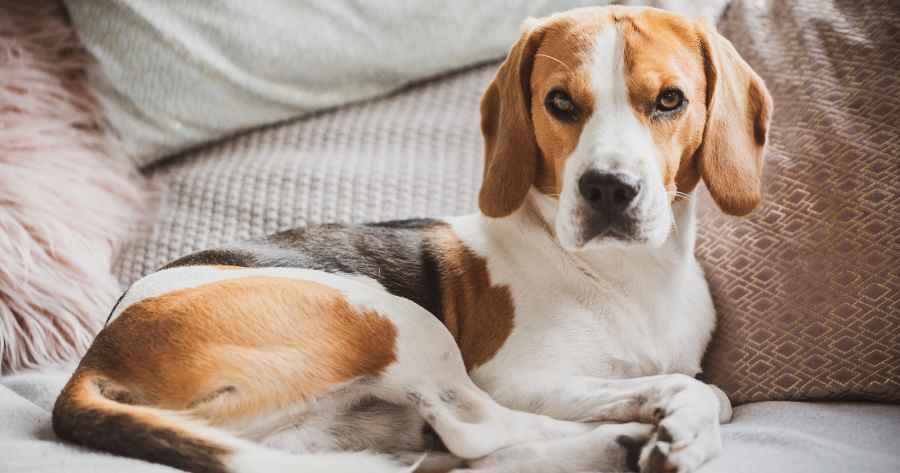For most people, a part of home life is having people come and visit you! That might be family or friends, or it might be children’s friends. Whoever it might be, you want to ensure your visitors and your dog are both happy.
If you’ve had your dog from a puppy, they may already be used to visitors and not be scared. If they came to you later in life, they may not be as happy having their home ‘invaded’ by strangers.
For the former group, you’re more likely dealing with over-enthusiasm towards your guests. Unless they’ve just hit their teenage months, when they’re re-thinking virtually everything and things that were fine before become worrying.
With the latter, they need to learn visitors are a good thing, or aren’t something that’s going to be stressful.
Overexcited with visitors
While it’s great your pup is so friendly, dogs who get overexcited with visitors can be just as likely to cause injury to your guests. In their enthusiasm, they can jump up (scratching or unbalancing people – especially children or vulnerable adults), grab at clothes or limbs, or try to take treats or food.
Fellow dog owners may be able to deal with all this bouncing exuberance, but if you have people who are more worried about dogs – this can become a more serious issue.
Scared
For dogs who haven’t been brought up to expect and enjoy visitors, having strangers in their home can cause stress and anxiety. Not only are these people your dog doesn’t know – and so doesn’t know if they are ‘safe’ – they’re disrupting the usual routine and are, for the dog, unpredictable.
A dog who’s worried by visitors can show a whole host of different behaviours. These can include:
- Barking or growling
- Backing away
- Hiding
- Retreating to a safe distance to observe
- Becoming hyperactive (zoomies etc) and so outwardly appearing overly happy
- Body language cues such as yawning, lip licking, whale eye etc
- Wagging tail at visitor but with low or stiff tail carriage
- Clinginess to owner
- Inability to settle while the visitor is there
- Threats including darting, nipping and potentially biting
Happy to see people
A dog who’s happy to see and is used to visitors, is far more likely to give them a welcome. There are varying degrees of enthusiasm depending on their personality, then they should be happy to settle down.
How to deal with visitors
- Make sure your friends and family know not to turn up unannounced. Whether your dog is hyper friendly or worried and anxious, you want to have time to prepare for visitors.
- Be aware that a ‘flash point’ is coming through the door. Most aggressive behaviour and dog bites happen at the edges of perceived territory (doors, gates, windows etc). It’s far better visitors can come in and be settled in the house before your dog meets them.
- If your dog is worried or anxious with visitors, give them the chance to observe these new people, but not have to interact.
- Think dog vision. Our pups look at outlines, not details, so sometimes in the doorway with light behind, people can look different. They might have hats or big coats on, an umbrella or be carrying large bags. These things can mean your dog doesn’t recognise them as people they know (or even as being human!).
- Have stair gates at the door to the room you’ll be spending time with your visitor in – and keep your dog the other side. They will be able to see, hear, and smell your guest but not be forced to interact. Ask your visitor not to stare at them, try to make friends or even talk to them in these early visits.
- This is better than locking them away in another room – which can be frustrating and create a negative association with visitors. It’s also far better than just crossing your fingers and hoping your dog will be OK.
For excitable dogs
- For friendly and enthusiastic dogs, the door is the prime ‘jump up and greet or ask for treats’ place – and often it’s somewhere your visitor can’t avoid them.
- For friendly dogs, once your visitor is settled, you can let them into the room. If they’re going to greet them like a whirlwind, it can sometimes be useful to give your guest a handful of dog treats to sprinkle on the floor immediately pre-greeting. This will give your dog something else rewarding to do rather than throw themselves on your visitor and take the edge off all that canine excitement!
- Apart from that, ask your visitor to ignore your dog for a little while so they can settle. There’s plenty of time for greetings and bottom scratches later.
- For friendly dogs, after the initial excitement, they can interact freely with your visitors – as long as your guests want that.
- If your visitors are children, keep an eye on play and interactions to make sure they’re not getting too exciting. And ALWAYS supervise!
With a little bit of preparation – and understanding your dog might well look at guests with different eyes than you – you can make sure everyone stays safe in your home.

